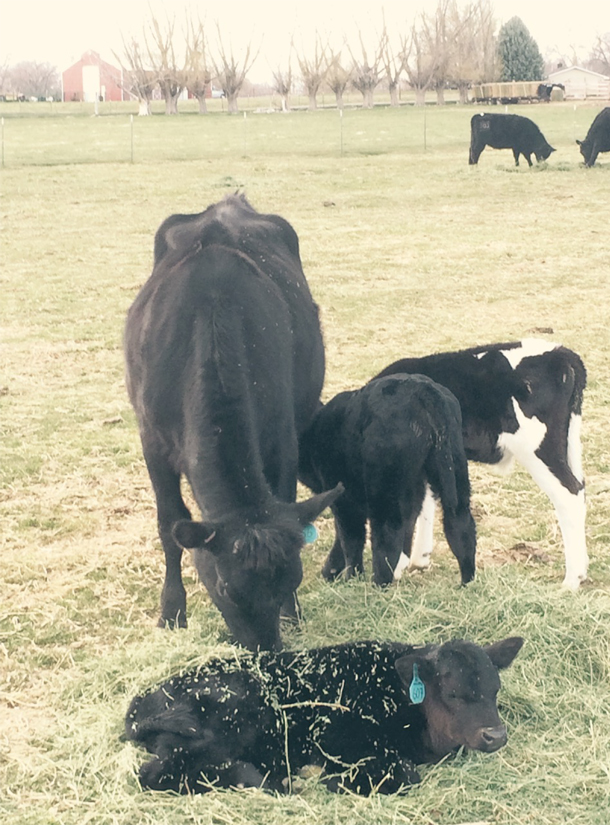 Those Holstein steers are where we got our start. Craig and I have yet to let go of our very first cow purchase, a Jersey heifer named Matilda. That year Matilda raised 13 calves – one of her own (a heifer named Daisy) and 12 Holstein fosterlings. At one point, we had five nurse cows raising bull calves. We adapted our program as the market and our taste changed, but we still have a few of those original cows. Today they are now surrogate mothers to Angus embryos rather than true nurse cows. But, as soon as that calf hits the ground, off to the dairy we go to find it a painted littermate – no point in wasting all that milk.
Those Holstein steers are where we got our start. Craig and I have yet to let go of our very first cow purchase, a Jersey heifer named Matilda. That year Matilda raised 13 calves – one of her own (a heifer named Daisy) and 12 Holstein fosterlings. At one point, we had five nurse cows raising bull calves. We adapted our program as the market and our taste changed, but we still have a few of those original cows. Today they are now surrogate mothers to Angus embryos rather than true nurse cows. But, as soon as that calf hits the ground, off to the dairy we go to find it a painted littermate – no point in wasting all that milk.
I don’t know a rancher who hasn’t raised at least a couple dairy calves, while I know very few who actually like doing it. A calf dies; a dairy bull calf is acquired; the beef calf is skinned; and the dead calf’s hide is tied to the dairy calf with bailing twine. The pitiful creature wants nothing more than a bottle of milk replacer and a warm hutch; instead, he wanders around in a dead animal’s skin and is kicked as humans try to force a teat in his mouth. One must retrieve the Holstein’s lost instinct by sheer force of will. This whole scene can be avoided by just selling the cow after the calf dies, but what is a rancher if not stubborn?
When growing up, this was the only future I could envision for an unwanted male in the female dairy world. It was in an intro-level animal science class that I learned 20 percent of beef production came from dairy animals. It was like opening up a new pasture; I had a stampede of new ideas. People raised bull calves for a living, not just to replace dead calves. I began seeing things in black and white, not just Angus black. I spent a summer interning on a dairy calf ranch and created an extensive enterprise budget for dairy calf beef production. It should come as no surprise that Matilda and her brood were the beginning of our herd.
The ebb and flow of agricultural markets have at times made raising these calves desirable, like they seemed when I crunched a few numbers in that animal science class. But we retooled our operation in 2014 when day-old bull calves were going for as much as $500 per head. Even with record beef prices we weren’t turning much profit. Two weeks ago, we purchased two day-olds for a hundred bucks, and I began thinking about business in black and white again – that is, until I checked local market reports.
There is a constant supply of dairy bull calves, despite erratic demand. And that supply is not going to stop until consumer demand for cheese tempers. As beef producers, we should think about the red-headed stepchild when we analyze market reports, not just as a headache after a calf dies. They make up 20 percent of beef production, and for that reason alone, those steer calves have a place in my head and occasionally a place in my pasture. ![]()
Erica Louder is a freelance writer based in Idaho.
PHOTO: The beef industry’s red-headed stepchild may be a Holstein calf, but those black and whites are providing 20 percent of today’s beef production. Photo by Erica Louder.







